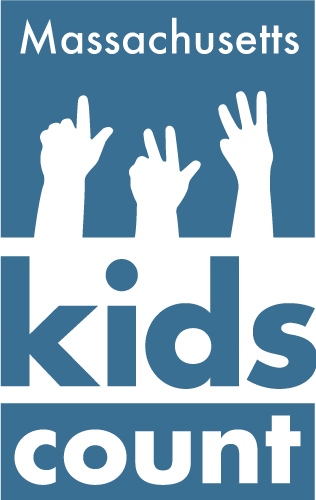The Governor’s budget1 includes important initiatives for improving our Commonwealth and helping residents deal with continued hardship, but it also would deeply cut two major taxes for the wealthiest households. The Governor’s budget proposal takes meaningful steps to fulfill the will of the voters through implementation of the Fair Share Amendment and protecting the revenue it raises. However, proposed tax cuts for the wealthiest households come at a time when voters just affirmed raising taxes on higher incomes by approving the Fair Share ballot question. It also comes at a time when hundreds of thousands2,3 of households will soon lose expanded MassHealth and SNAP benefits in the face of a worsening affordability crisis, especially for communities of color.4,5
Spending in this budget proposal would increase 1.6 percent over last year’s General Appropriations Act (GAA), after adjusting for anticipated inflation.6,7 The Governor’s budget for this fiscal year proposes nearly $55.4 Billion in spending compared to $52.4 Billion in the 2023 General Appropriations Act (GAA).8,9 Of note, spending on environmental programs reached 1 percent of the total budget proposal for the first time,10 including increased spending on environmental justice communities.11
Our state budget is a moral document that can address inequities and the unequal access to resources that has been created by systemic racism.12 We know that communities of color bear a disproportionate share of the burden of economic hardship,13,14 and continue to do so as we recover from the pandemic.15,16 This budget proposal includes investments that will reduce some of the hardship faced by Bay Staters, and this will help communities of color. However, we should track how these investments affect racial equity by disaggregating spending and program data and evaluating program cost in the context of actual needs of different groups and communities.17 The Governor has proposed Equity Audits across state government, which could be a great step in the right direction.18 It may further show that the investments proposed in the Governor’s budget do not go far enough for certain communities.
(Mostly) Fulfilling the Promise of the Fair Share Amendment
The Governor’s budget takes concrete steps toward implementing the voter-approved Fair Share Amendment, which amends the State Constitution to raise revenue via a 4 percent surtax on annual income over $1 million dollars. These steps also help to ensure that Fair Share funds only go to what voters intended: education and transportation.
The Administration proposes placing all Fair Share revenue in a new fund,19 as the Commonwealth does with other dedicated revenues,20 making it easy to track how much Fair Share money is raised and how it is spent.
The administration also proposes protecting the stability of Fair Share spending. The new surtax only applies to higher-income households. These households receive a far higher proportion of income from owning and selling things like stocks and bonds, which tend to fluctuate more than wage and salary income. This means the source of Fair Share revenue changes more with the business cycle. The Administration proposes protecting programs funded by Fair Share dollars against these fluctuations by introducing a minimum fund balance that serves as a reserve during market downturns when revenues decline.21
Unfortunately, the Administration also proposes expensive tax cuts that provide large benefits to the wealthiest and highest-income households. The administration proposes cuts to the estate tax, which applies to the intergenerational transfer of assets exceeding $1 million under current law.22,23 The administration’s proposal would provide the largest benefit, with $182,000 in tax reductions, to the biggest estates and would eliminate tax for estates under $3 million in size.24 In addition, the Governor proposes cutting the tax rate on income earned by selling assets held less than a year, typically financial assets like stocks and bonds or flipped real estate. Eighty percent of these benefits will go to the highest-income 1 percent of households in Massachusetts.25 Moreover, the benefits of such a cut disproportionately benefit white families. A U.S. Treasury study last year26 found that, nationwide, Latinx households received only 3 percent of all tax breaks on capital gains and dividends, and only 2 percent went to Black households.
Together these proposed tax cuts will forego $389 million in revenue annually,27 reducing the amount of available investment for public programs and infrastructure. These cuts undermine Fair Share by giving a tax break to the most affluent households when voter approved additional revenue raised more equitably through a surtax on more affluent households.
Hardship in the Face of Receding Federal Funding
The federal government shares in the cost of providing support to low-income residents, notably through MassHealth and SNAP (food assistance). The federal government provided expanded funding for these two programs under the COVID public health emergency. This expanded federal funding is ending, leaving large numbers of Massachusetts residents without publicly supported health insurance or less able to afford healthy food. The Governor’s budget proposal, along with supplemental budget filings, proposes softening the blow of the loss of federally-funded expanded benefits. For example, the administration proposes a three month extension of a portion of the SNAP emergency allotments underwritten by federal funding.28,29
However, hardship doesn’t end just because expanded federal funding does, so proposed “off-ramps” may not be adequate. Food and housing costs have risen sharply with inflation and residents with health insurance struggle to access health care due to the high cost of premiums, co-pays, and out-of-network care.30 And these affordability challenges disproportionately affect BIPOC communities.31 For example, from August 2022 to January 2023, 34 percent of Black households and 35.5 percent of Latinx households with children were food insecure, compared to 18.4 percent of white households with children.32 While the Governor’s FY2024 budget proposal, alongside supplemental budget filings for FY2023, attempts to address these challenges, these investments may not be enough to offset the affordability crises that persist even as the pandemic has entered a new phase.
Several significant tax credit and housing proposals in the Governor’s budget would make a meaningful difference for families and individuals struggling to afford living in Massachusetts. The Governor proposes a Child and Family Tax Credit expansion that will help 700,00033 households meet expenses by providing $600 per dependent. Likewise, a new MassReconnect program would allow many residents over 25 to attain higher education credentials through free community college, and the new Summer Electronic Benefit Transfer (Summer EBT) would provide food benefits over the summer to families with children who are eligible for SNAP benefits or free and reduced-price lunch.34
These state initiatives may not fully compensate for the large losses in federal support for vulnerable Massachusetts households. With additional investment, the Massachusetts Rental Voucher Program (MRVP)35 and MassHealth could be expanded further to pick up where there is much unmet need or when federal funds dry up. Addressing these unmet needs and making bolder public investments would require additional available revenues, which could be achieved by rejecting tax cuts aimed at the most affluent and perhaps also forgoing this year’s deposit into the Commonwealth’s already healthy Stabilization Fund.36
Effect of Inflation
We have all felt the impact of inflation on our household budgets, with goods and services costing more this year than last year, and the Commonwealth is no different. Any spending in the state budget that does not keep up with inflation is effectively a cut in funding. We don’t yet know what inflation will look like in FY 2024, which begins this July. However, the Congressional Budget Office (CBO) projects inflation at 3.8 percent for this period.37,38 In other words, according to official projections, each spending item would have to increase by at least 3.8 percent above last year’s amount to not be a cut.
Endnotes
1 https://budget.digital.mass.gov/govbudget/fy24/
2 https://www.bostonglobe.com/2023/03/01/metro/it-is-going-be-disruptive-masshealth-rolls-set-shrink-by-300000-healey-estimates/
3 https://www.mass.gov/lists/data-on-impact-of-federal-snap-emergency-allotments-ending-on-massachusetts-households#:~:text=The%20federal%20government%20
4 https://www.projectbread.org/hunger-by-the-numbers#:~:text=In%20the%20last%206%20months,with%20children%20were%20food%20insecure.
5 https://www.tbf.org/news-and-insights/reports/2021/jun/greater-boston-housing-report-card-2021/gbhrc2021-chapter-1
6 Using Congressional Budget Office (CBO) estimates of inflation, adjusted to the State Fiscal Year
7 Nominal (before inflation) change is $2,866,229,300, or 5.47%
8 https://budget.digital.mass.gov/govbudget/fy24/appropriations/?tab=historical-budget
9 The GAA appropriations were increased by supplemental budget filings, which are not included here.
10 https://budget.digital.mass.gov/govbudget/fy24/budbriefpdf/fy24_bb09_climate_action.pdf
11 https://www.mass.gov/environmental-justice
12 https://massbudget.org/2023/02/28/antiracist-state-budget/
13 https://www.tbf.org/news-and-insights/reports/2021/jun/greater-boston-housing-report-card-2021/gbhrc2021-chapter-1
14 2021 5 Year American Community Survey, Table S1703: Selected Economic Characteristics of People at Specified Levels of Poverty in the Last 12 Months.
15 https://www.projectbread.org/hunger-by-the-numbers#:~:text=In%20the%20last%206%20months,with%20children%20were%20food%20insecure.
16 https://hcfama.org/wp-content/uploads/2021/09/Hub-Altarum-Data-Brief-No.-97-Massachusetts-Healthcare-Affordability-1.pdf
17 https://massbudget.org/2023/02/28/antiracist-state-budget/
18 https://www.wgbh.org/news/politics/2023/01/12/healey-pledges-new-task-force-to-weigh-equity-in-state-government
19 https://budget.digital.mass.gov/govbudget/fy24/budbriefpdf/fy24_bb03_fair_share_investments_in_education_transportation.pdf
20 https://malegislature.gov/Laws/GeneralLaws/PartI/TitleII/Chapter10/Section35t
21 https://budget.digital.mass.gov/govbudget/fy24/budbriefpdf/fy24_bb03_fair_share_investments_in_education_transportation.pdf
22 https://www.cbpp.org/research/state-budget-and-tax/state-taxes-on-inherited-wealth
23 https://www.mass.gov/estate-tax
24 https://budget.digital.mass.gov/govbudget/fy24/budbriefpdf/fy24_bb02_providing_meaningful_tax_relief.pdf
25 Data provided by Institute on Taxation and Economic Policy for tax filers of all ages (November 2018); see https://massbudget.org/reports/pdf/14%20Revenue%20Options%201-15-2019%20revised.pdf
26 https://home.treasury.gov/system/files/131/WP-122.pdf
27 https://www.mass.gov/doc/fy-2024-tax-package/download
28 https://budget.digital.mass.gov/govbudget/fy24/budbriefpdf/fy24_bb10_food%20security.pdf
29 3 month extension at 40% of the “emergency allotment;” https://www.mass.gov/doc/h47-supplemental-budget-filing-letter/download
30 https://hcfama.org/wp-content/uploads/2021/09/Hub-Altarum-Data-Brief-No.-97-Massachusetts-Healthcare-Affordability-1.pdf
31 2021 5 Year American Community Survey, Table S1703: Selected Economic Characteristics of People at Specified Levels of Poverty in the Last 12 Months.
32 https://www.projectbread.org/hunger-by-the-numbers#:~:text=In%20the%20last%206%20months,with%20children%20were%20food%20insecure.
33 https://budget.digital.mass.gov/govbudget/fy24/budbriefpdf/fy24_bb02_providing_meaningful_tax_relief.pdf
34 https://budget.digital.mass.gov/govbudget/fy24/budbriefpdf/fy24_bb10_food%20security.pdf
35 https://www.tbf.org/news-and-insights/press-releases/2022/december/mrvp-report-pr-20221214
36 https://massbudget.org/2023/02/21/rainy-day-fund-cap/
37 Consumer Price Index, All Urban Consumers (CPI-U)
38 CBO 10-Year Economic Projections, 02/2023; Quarterly CPI-U projection data were converted to State Fiscal Year (July 1 to June 30); https://www.cbo.gov/data/budget-economic-data#4





